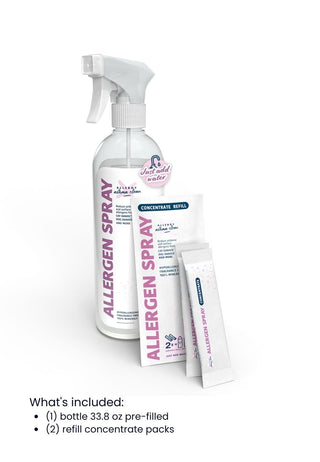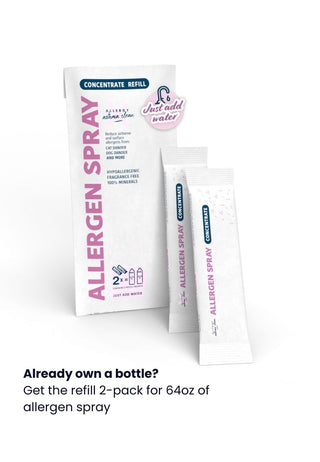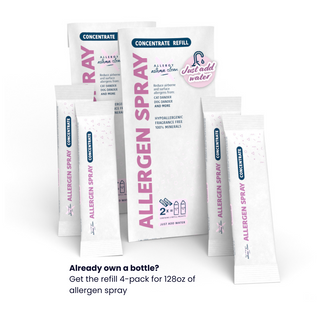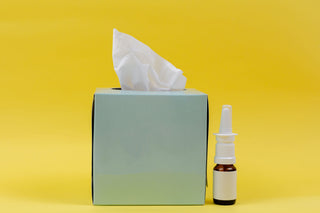

Allergens
Quick guide on allergy relief products
And a new idea to add to your list
Allergy Relief Products
We know those itchy eyes, sneezing fits, and headaches drive you crazy. So here's a quick pro and con list of popular products to reduce your allergies and a new one that might tickle your fancy but not your nose!
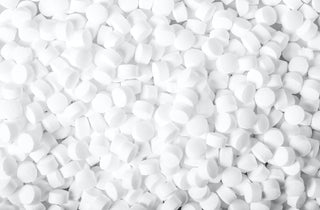
Over-the-counter (OTC) meds
Many allergy sufferers take medication daily to keep their symptoms under control. Allergy medications are divided into two main categories: antihistamines and decongestants. Antihistamines work by preventing histamine from being released. Histamine is a chemical released when the body is exposed to an allergy trigger, such as pollen or pet dander. When histamine is released, it can cause various symptoms, including sneezing, itching, and watery eyes. Decongestants, on the other hand, shrink the blood vessels in the nose, reducing swelling and allowing for easier breathing which can help relieve the stuffy feeling often associated with allergies. Decongestants are available in both pill and nasal spray forms.
Should you use OTC meds daily?
Antihistamines are one of the most popular allergy-reducing products, but did you know they can lose their effectiveness over time, requiring higher doses to achieve the same effect? Additionally, regular use of these medications can lead to side effects such as drowsiness, dry mouth, and dizziness. Long-term use can cause serious problems such as high blood pressure and heart arrhythmias in severe cases.
What about decongestants?
While decongestants are effective at relieving congestion, they should not be used for more than a few days at a time, as they can cause rebound congestion. Rebound congestion is a worsening of nasal congestion. In other words, constant nasal stuffiness. Also, too much medication can cause side effects such as dizziness, anxiety, and trouble sleeping.
Pros: Readily available in grocery, drug stores, or online
Cons: It takes 30 minutes to work. Most effective at the 2-3 hour mark. Several side effects include drowsiness, headache, stomach, dizziness, and more. Also, the potential for rebound congestion. Sudden withdrawal of some antihistamines could cause trouble sleeping or burning and itching of the skin.

Nasal Spray anyone?
A nasal spray is the most effective way to reduce allergy symptoms for some people. Nasal sprays help to reduce congestion and inflammation in the nasal passages. The idea behind nasal sprays is that the allergy medication can be delivered directly to the allergy-causing area, providing relief from allergy symptoms without the side effects that can come with oral allergy medications. These sprays are thought to be more effective than oral allergy medications, as it allows for a higher concentration of the allergy medication to be delivered to the target area. For those people that have a difficult time swallowing pills, this might be an option.
Four different kinds of sprays
1.) Decongestant nasal sprays can help reduce swelling and inflammation in the nasal passages.: Just like the decongestant pill, decongestant nasal sprays can cause rebound congestion. Short-lived allergy relief
2.) Antihistamine nasal sprays can effectively treat allergic reactions by blocking the production of histamines, reducing your allergic symptoms. They are available by OTC or by prescription.:Short-lived relief from allergies
3.)Steroid nasal sprays can be used to reduce inflammation. Available both by OTC or by prescription.: Potential side effects could include loss of sense of smell, headache, sore throat, and other problems
4.) Saline spraysThese sprays flush out irritating allergens. In addition, they reduce inflammation and add moisture to dry nasal passages. There are two kinds: isotonic, which means it's the same salinity as your body. The other kind is hypertonic, meaning there's more salt in the spray than naturally occurring in your body.: Safe to use
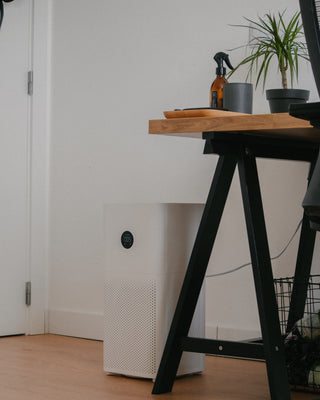
Do Air Purifiers Work?
Air purifiers work; however, there are a few things you'll want to keep in mind. First, consider the size of the unit. Air purifiers come in a variety of sizes. Choose one appropriate for the square footage of the room you plan to use. Second, take a look at the filter type. Some air purifiers use HEPA filters, while others use activated carbon filters. Both types are effective at trapping airborne particles, but HEPA filters capture smaller particles like dust and pollen, while activated carbon filters are better at absorbing odors. Third, consider the noise level. Some air purifiers can be loud, so if you plan to use them in a bedroom or quiet space, choose a low-noise-free model. Finally, you'll need to consider features offered by different air purifiers. Some air purifiers have features like automatic operation, a remote control, or indicator lights that let you know when it's time to change the filter. Also, a good air purifier is expensive.
Pros: Cleans your air 24/7
Cons: Air purifiers only work in the room where they are located. Air purifiers that clean your air are expensive. Air filters need replacing or cleaning. Some air purifiers are noisy.

What about allergy shots?
Allergy shots are a form of immunotherapy that help to reduce the symptoms of an allergy. They work by injecting a person with small amounts of the allergy-causing substance. Over time, this helps build immunity and reduce the severity of reactions. Allergy shots are most commonly used for people with allergies to pollen, dust mite, or animal dander. Allergy shots are usually given once or twice a week for several months, and the frequency is gradually reduced. The entire process can take several years, but the shots can help significantly reduce allergy symptoms.
Pros: It could help reduce your allergic response for life. Covered by most insurance
Cons: Initially takes 3-6 months with from one to three injections per week. Generally takes three or five years to reduce allergic attacks. Shots can result in swelling or tenderness at the injection site
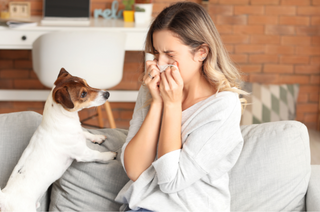
Not into injections? What about sublingual immunotherapy?
Sublingual immunotherapy is a type of allergy treatment that involves placing a tiny drop or a tablet of an allergen extract under the tongue. The extract is absorbed into the bloodstream, which helps build immunity to the allergy-causing substance. Sublingual therapy can treat allergies to pollen, dust mites, pet dander, and more. It is generally considered safe and effective, with a low risk of side effects. This therapy typically involves taking the allergy extract daily for several months to years. While this sounds easy, the FDA has not approved the route of administration (tablet form) and only approved three out of 45 allergens (ragweed, dust mites, and grass).
Pros: Drops are shot free
Cons: Reliability is questionableIt could take six months or longer

What about an Allergen Spray?
There are several allergen sprays on the market. All of them are used by spraying on soft surfaces such as upholstered furniture to reduce allergens. But there's the new kid on the block. It's called Allergen Spray by Allergy Defender. Allergen Spray is the only product you can spray in the air AND on surfaces to reduce your allergic symptoms. You spray the rooms in your home to reduce allergens, and you spray upholstered furniture, curtains, pillows, and more. It's scientifically proven to reduce dog and cat dander, dust mites, and cockroach allergens. How does it do that? Since allergens are tiny and float in the air, they are everywhere. Allergen Spray ingredients attach themselves to those teeny allergens and drop them to the ground. Once on the ground, these same ingredients dry out the allergen, so it can't float around and bother your nose, eyes, or lungs anymore. Allergen Spray contains no plant-based ingredients, petroleum, essential oils, or harsh chemicals. It's hypoallergenic (meaning it won't cause an allergic reaction). It contains zero fragrances or scents that could irritate you. Why not add this to your arsenal of allergy-reducing products? And there are no side effects!
Pros: Mineral ingredients will not harm you. Scent and fragrant free. Can be sprayed on both hard and soft surfaces. Eco-friendly bottle contains only ingredients inside, not water. All ingredients are listed, so you know what you're spraying in your home. A very quick way to gain control of allergens in a room. You can use Allergen Spray in partnership with any other product mentioned in this article
Cons: Have to add water to the bottle. It can leave a "residue" on hard dark surfaces (which can be wiped off) because it is collecting the dust in the air and dropping it to the ground.
There you have it; a quick overview of products to relieve indoor allergies. Hope we tickled your fancy about discovering a new way to reduce allergies; Allergen Spray is safe to use, and allergy relief is just a spray away!
Disclaimer: Always talk to your doctor before starting or stopping any medications.
Indoor Allergen Control
Articles

What's Your Trigger of Your Allergy Symptoms? Could it be Grass Pollen?
Grass pollen allergies are a common type of seasonal allergy, affecting millions of people worldwide. But what exactly causes these allergies? Grass pollen is released by various grass species during...
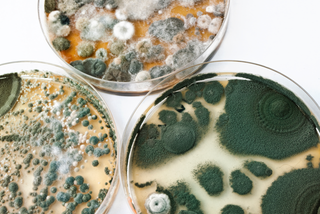
Mastering Your Mold Allergy
Mold is a type of fungi that thrives in damp and humid environments, such as basements, bathrooms, and areas with water damage. When mold spores are inhaled, they can trigger...



